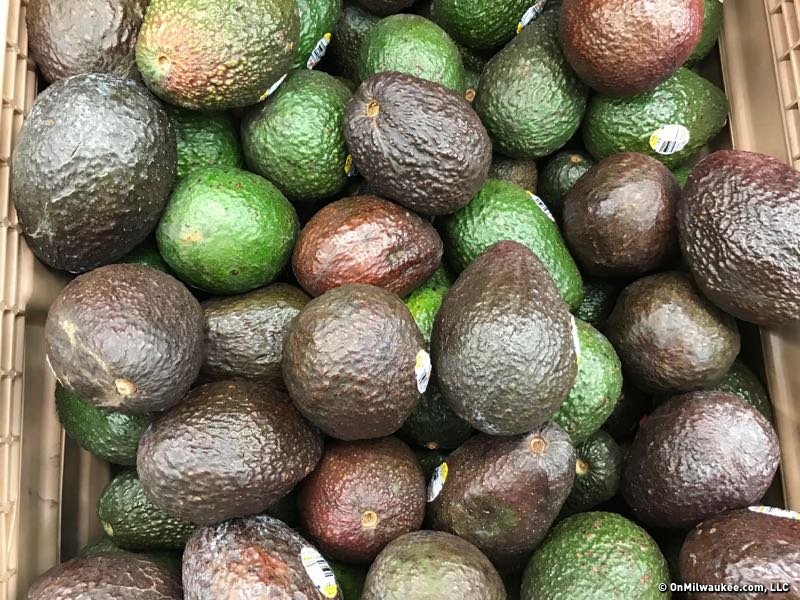"I was told it wasn't for children." Carrie Stuckman, owner of We Have Your Food, wrote to me when I asked her about her first experience eating pickled herring. "I had watched the adults at the Christmas party hovering near the buffet, their red plastic toothpicks, tiny paper plates and cocktail napkins in hand. Simply stab the herring, place it on a cracker, and finish it in two or three bites. If time permits, nod and smile while you chew. "
"When Uncle Bob spilled his beer, I knew it was time to make my move," she went on. "As I poked the pickled herring, I was surprised by the coarseness; I imagined it would be more like silk. Yet it was perfect, all tart and sour and coarse and spicy, maybe even sweet. A grown-up kaleidoscope of flavors exploding, and for me there was no turning back."
It's a common belief among European immigrants that eating herring on Christmas Eve or at the stroke of midnight on New Year's will bring good luck in the coming year. But, why is it that herring is relegated to the winter months?
It shouldn't be, according to Kim Wall, owner of Ma Baensch Foods, 1025 E. Locust St. In fact, one of her favorite sayings happens to be, "Nothing says summer like free herring from Ma Baensch."
And Wall would know. She has provided samples of her delicious herring to Locust Street Festival-goers for years, and she doesn't have plans to stop anytime soon.
Wall, who comes from a long line of fishermen and fish lovers, bought the Ma Baensch herring business from the Baensch family in July 1999. Under her leadership, the company is celebrating 80 years in business during 2012.
When I asked Wall about her favorite way to eat herring during the summer months, she replied simply: "Eat it on a cracker."
But, she also pointed me toward a deliciously fresh recipe for herring ceviche containing onions, red bell pepper, cilantro and jalapenos.
"You can eat it on tortilla chips, or straight out of the bowl," she remarked as she told me how the pickled herring made a perfect stand-in for the more ordinary white fish.
Herring, which is rich in Omega-3 fatty acids, protein and calcium, is commonly served as part of the German Katerfrühstück (hangover breakfast), because they are believed to contribute to the restoration of much-needed electrolytes. They're also quite the delicacy in many parts of Europe, so much so that pickled herring has found itself as part of the cuisine of Germans, Jews, Scandinavians, Baltic people and Eastern Slavs.
Justin Carlisle, executive chef at Umami Moto, grew up in Sparta. He has fond memories of herring as a staple food while he was growing up.
"I think for most of the generations ahead of mine it was a regular food source and part of the daily selection," he says. "My grandparents would fish for herring in Northern Wisconsin and Canada, and we'd process it as a family. We would pickle it with vinegar and wine, mustard seeds and onion."
Stephanie Traska, a local musician and music teacher, also reminisces about the pickled fish. She remembers stories her grandmother told about buying kegs of fish and cutting it up into filets to be pickled. She also recollects how pervasive the tradition of eating the pickled herring was in her family.
"I remember being at the farm house as a little girl," she tells me, "running into the dining room and seeing the big buffet set up with all the food everyone had brought and right in front was the herring and crackers. We always ate herring on Saltines. I asked Mom why we didn't eat it on any other bread or crackers and she said it never tasted right on anything else."
But, not everyone can conjure such heart-warming memories.
"My dad and his parents came over from Germany in the '50s and so herring was often on the table during holidays," recalls Jenn Hack, software designer for Red Arrow Labs. "As a child I was required to try everything once, and herring was one of those things. I figured since I was half German I should love it too. So every year I would try it again, thinking my feelings would change. They never did. To me, herring is still a smooshy piece of fish covered in an odd white sauce. Oh well. At least I tried it!"
Sunny McDaniel, Wisconsin native and food blogger at Smart Cabbage, describes her first experience with creamed herring as less-than-desirable: "I've been sitting here for 10 minutes trying to figure out how to describe what it felt like. Not quite pencil eraser, not quite sponge. Not quite raw fish and definitely not cooked fish. Too firm to be jello or custard, too soft to be meat. Have you ever eaten a defrosted strawberry, which is kind of slug-like and slippery? Kind of like that, but fishy. And gray."
Strong smelling, oddly textured and not quite what one would expect, some might call herring an "acquired taste." Much like raw oysters, black coffee or pungent cheeses, the briny flavor of herring can take some getting used to. Based on what we know about the acquisition of taste, it's likely that growing up around a food and growing accustomed to its smell, texture and flavor gives one a much greater chance of enjoying the food in adulthood. Repeatedly trying a food can also predispose one to developing a greater appreciation.
But, in the case of herring, sometimes it's more about tradition and ritual than anything.
"I shall never again devour as much herring in one night as I did that evening, ducking in and out from underneath the dining room table." Stuckmann writes.
"As an adult, I have a crystal herring bowl very similar to my grandmother's. The red plastic toothpicks are right next to it, resting in a shot glass exactly like I remember. And herring is not for children, I warn those within earshot, daring them to break the rules."
As a passionate champion of the local dining scene, Lori has reimagined the restaurant critic's role into that of a trusted dining concierge, guiding food lovers to delightful culinary discoveries and memorable experiences.
Lori is an avid cook whose accrual of condiments and spices is rivaled only by her cookbook collection. Her passion for the culinary industry was birthed while balancing A&W root beer mugs as a teenage carhop, fed by insatiable curiosity and fueled by the people whose stories entwine with every dish. Lori is the author of two books: the "Wisconsin Field to Fork" cookbook and "Milwaukee Food". Her work has garnered journalism awards from entities including the Milwaukee Press Club. In 2024, Lori was honored with a "Top 20 Women in Hospitality to Watch" award by the Wisconsin Restaurant Association.
When she’s not eating, photographing food, writing or planning for TV and radio spots, you’ll find Lori seeking out adventures with her husband Paul, traveling, cooking, reading, learning, snuggling with her cats and looking for ways to make a difference.







